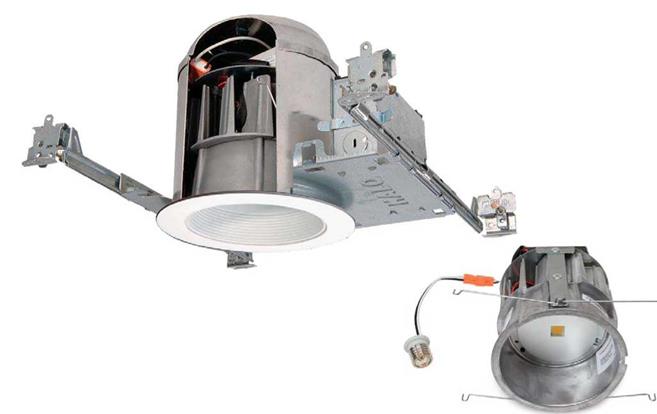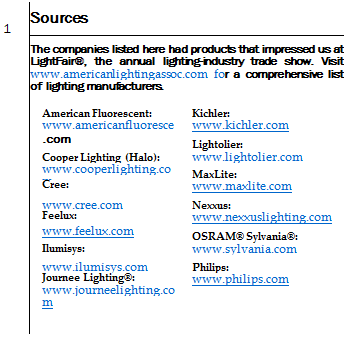Task and Accent Lighting Require Focused Light
LEDs produce a focused beam of light. Although their relatively small output means they can’t throw light as far as some incan – descents, there are plenty of circumstances where they work well as task lights. And they’re ideal for accent lights because they don’t produce UV-light that damages paintings and fabrics. Because LEDs are small and easily produced as pucks or strip lighting, they are ideal for undercabinet illumination or as accent lights hidden in coves or inside cabinets, where small size and low heat output are important.
Glare can be a concern with bright LED fixtures, especially recessed lights. San Francisco Bay Area lighting designer Eric
![]()
 Kind of canlike. Although the fixtures look quite common, like the Halo model above, the light module for recessed LED fixtures bears little resemblance to a bulb. With a screw-in adapter like the one shown attached to the Halo module at right, LEDs can be retrofit to existing recessed fixtures.
Kind of canlike. Although the fixtures look quite common, like the Halo model above, the light module for recessed LED fixtures bears little resemblance to a bulb. With a screw-in adapter like the one shown attached to the Halo module at right, LEDs can be retrofit to existing recessed fixtures.

![]()
Johnson recommends using a diffuser with recessed cans or, at the very least, recessing the bulb as deep into the fixture as possible.
Lightolier®’s Calculite™ is a lensed fixture that uses a diffuser to create white light. Instead of coating the LED bulbs with phosphor, the phosphor is applied to the diffuser.
Under the first approach, variations in the amount of phosphor coating on each diode affect the overall color of the light. When you have multiple downlights in a room, this can result in variations in the light from the different fixtures. It’s easier to apply an even, consistent phosphor coating to a glass diffuser, improving the consistency and the color of the light. Placing the reflector above the phosphor layer results in more light output than other methods and less glare, according to the manufacturer.
A unique feature of LEDs is that a single fixture with different types of diodes can create multiple temperatures and colors of light, opening new design possibilities for accent lighting.
One last thing: Both CFLs and LEDs can be tricky to dim. The ballasts and drivers, respectively, must be compatible with the dimmers, and the light may cut out before dimming down all the way. This information is usually indicated on the product.






Leave a reply